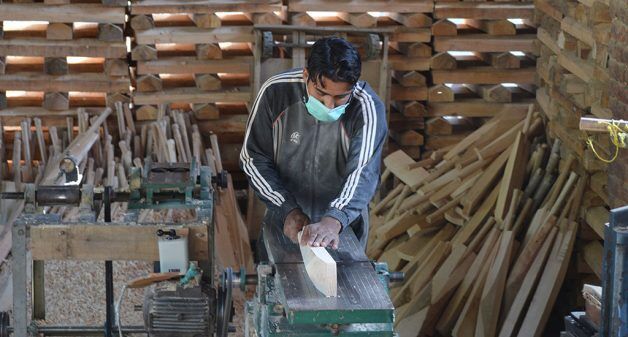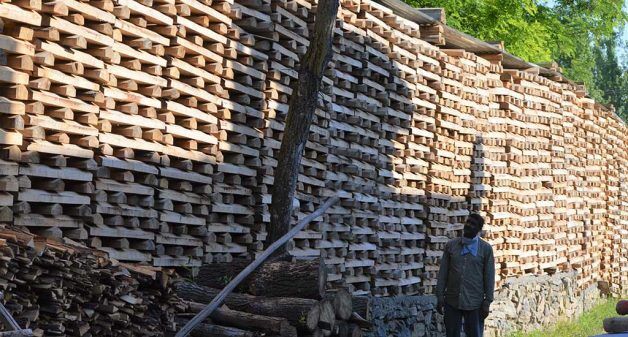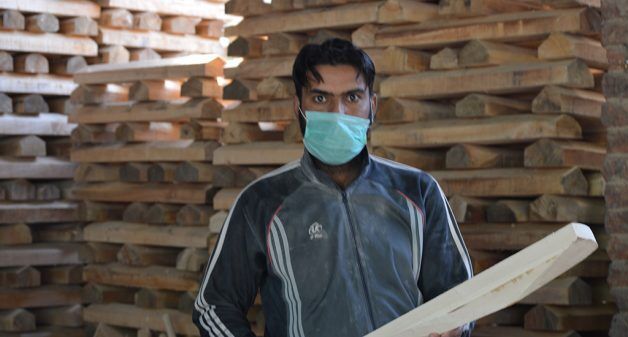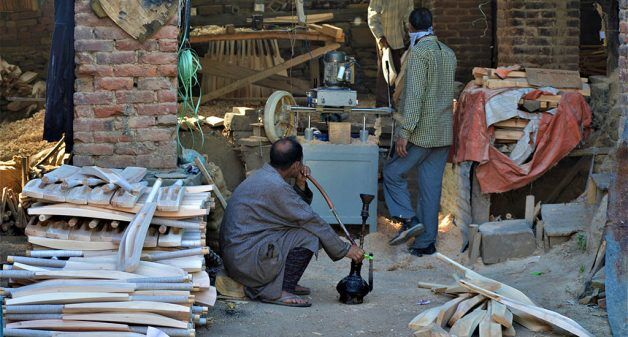
Kashmir’s cricket bat industry goes for a toss
Kashmir’s political and pandemic lockdowns, never mind inadequate infrastructure, are dealing a severe blow to its 100-crore cricket bat industry, which experts say could otherwise be booming.

Kashmir’s political and pandemic lockdowns, never mind inadequate infrastructure, are dealing a severe blow to its 100-crore cricket bat industry, which experts say could otherwise be booming.
Cut willow logs can be seen lining either side of the Srinagar-Jammu Highway in south Kashmir’s Anantnag district.
The willow clefts, as the logs cut approximately to the size of the bats are called, are arranged in stacks for drying for months, so eventually they can be shaped into cricket bats.
The bat manufacturing industry in Kashmir has a long history which predates the 1947 partition of the sub-continent.
But these days “business is down”, say the bat manufacturers. Two long COVID-19 lockdowns, preceded by a long security and communication lockdown across Kashmir in 2019, have caused much harm to the local bat business.
Cricket willows in India
For decades bat making flourished in the region, as Kashmir – after the United Kingdom – is a leading exporter of willow cricket bats to the rest of the world.
“Wood from willow trees – Salix alba Caerulea (female white willow) specifically – has been used for nearly 200 years for making the blades of cricket bats and Kashmir is the only other region in the world, besides United Kingdom, where willow is grown,” said Tariq H Masoodi, dean of the Faculty of Forestry at Sher-e-Kashmir University of Agricultural Sciences and Technology (SKUAST), Srinagar.

This resulted in the establishment of scores of bat-making factories, which are mostly concentrated in south Kashmir, some 55 km south of Srinagar, the state capital.
From 25 bat manufacturing units in the late ‘70s, it grew to nearly 300 units by 2009, with 195 of them in Anantnag district, as well as some parts of Pulwama.
Multiple disruptions to manufacturing
But the political troubles and pandemic have hurt this once cracking industry.
“Any business is possible only when people move around. But the pandemic disrupted this for most part of the last two years and our business took a severe blow,” said Abdul Rashid Khanday, who continues his family’s bat-making business started by his grandfather.
“Our bats go to states like Maharashtra, Uttar Pradesh, Punjab and Gujarat. All these states have been hit hard by COVID-19 which caused a sharp decline in the demand for cricket bats,” said Khanday.
But problems started even before the lockdown, manufacturers pointed out.

After withdrawing the semi-autonomous status of Jammu and Kashmir under Article 370 of the Indian Constitution on August 5, 2019, many restrictions were imposed.
Curbs on movement of people as well as on mobile telephone and internet connectivity for many months across Kashmir severely impacted the business. The pandemic merely compounded the problems.
“Over 90% of the demand was down during the COVID-19 lockdown,” said Asif Rehman, a cricket bat manufacturer.
According to a report by MSME Business Forum, a stakeholder network, the state’s bat manufacturers have incurred a loss of Rs 1,000 crore in the last three years.
Investments locked-up on materials
Aijaz Ahmad, another manufacturer, said they not only had to worry about the lack of market, but also about the damages to the raw material and the investment.
Most of the cricket bat manufacturers, Ahmad said, either borrow money, take loans or sell off some assets when they have to buy raw material.
The willow clefts, he said, are left for drying up to nine months before converting them into cricket bats.

“But, due to the decline in trade, money invested in buying raw material has hardly brought any new income. Now you can imagine what we’re going through,” Ahmad said. “It’s so challenging for us to pull through the prevailing situation as the past three years have been very bad.”
Asif Rehman said that consumable chemicals, such as polish and adhesives used while making bats, also got damaged because of the long break in manufacturing.
Manufacturers seek government support
“COVID-19 is not the only reason for the declining business. It just worsened our woes,” said Nazir Salroo, a member of Kashmir’s Federation Chamber of Industries and former president of Kashmir’s Cricket Bat Manufacturers’ Association.
There are some basic problems with which the industry has been struggling. For example, Salroo said, tax (GST) is the same for a big company in India and a smaller bat manufacturing unit in Kashmir.
“There’s no distinction at all. This has made it very difficult for many to compete with big players. As GST is the same for Kashmiri and imported raw materials, some prefer the English willow over Kashmir’s,” Salroo explained.

According to him, the manufacturers took up this issue several times with the government, “but the government has not done anything about it.”
Salroo said that the administrators do not take Kashmir’s cricket bat manufacturing industry seriously.
In 2008, he said, the government set up one of the biggest clusters in Asia at Sethar village, spending crores of rupees.
The government announced that the initiative would improve the quality of Kashmiri bats and make them competitive in the market. Also, a proposed seasoning plant would drastically minimise the time for drying the clefts compared to open-air drying.
“But it never took off,” Salroo said. “Buildings were constructed, but the required infrastructure, like the seasoning plant, was never put in place.”
The MSME Business Forum report also stresses the need for a modern seasoning plant.
According to a 2018 government publication, the government planned to spend Rs 4.35 crore to upgrade the facility at Sethar.
While the 2019-20 Digest of Statistics has other data, those pertaining to cricket bat manufacturing are not available after 2005. However, the report shows a maximum export of 2,473 tonnes of cricket bat in 2016-17 declining to 1,330 tonnes in 2019-20.
“As per our estimates, Kashmir’s cricket bat industry employs over 50,000 people directly and indirectly,” said SKUAST’s Masoodi. “It’s a Rs 100 crore industry and has immense growth potential – if manufacturers maintain quality.”
Athar Parvaiz is a Srinagar-based journalist.